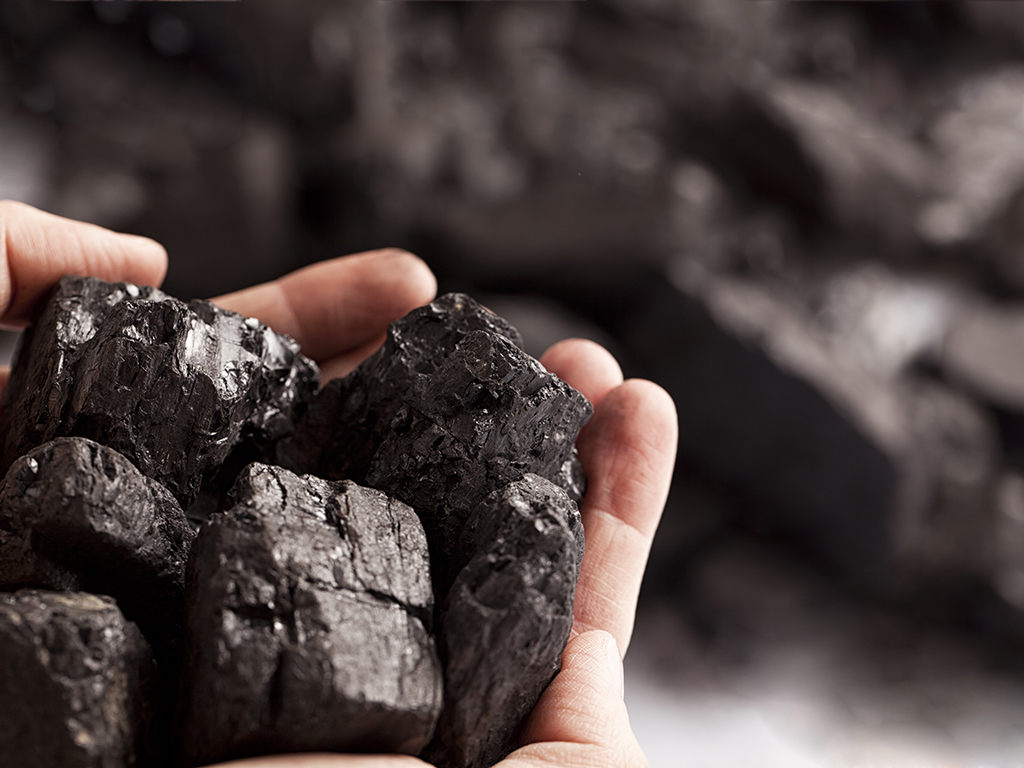
Basna is a Swiss Company headquartered in Cacak, producing charcoal (Biochar) and heat energy from wooden biomass. The company claims that the way it converts and applies its biomass is far more beneficial for the environment than any other technology. By using pyrolysis to produce wood charcoal, they can influence the production process and give charcoal the desired characteristics, depending on the purpose. On the one hand, they can produce barbecue charcoal of top quality for professional kitchens and home barbecues, whereas, on the other hand, they can produce wood charcoal which meets the strict criteria for the European Biochar Certificate (EBC) and which is very clean and free of forbidden toxins, and which is used as organic soil fertilizer or as a very important ingredient in animal feed.
We discussed this technology and implementation of Biochar with the owners of Basna, Vesna and Balz Baur.
The interview with Vesna and Balz Baur is the eight in line of the conversations with companies-members of the Swiss-Serbian Chamber of Commerce, through which the SSCC promotes the operations of Swiss companies in Serbia and highlights the values and good business practices of this country and these companies.
eKapija: You are claiming to have more impact on reduction of the Greenhouse effect as a conventional cogeneration plant fueled by biomass.
VB: In fact yes. But we too, we put our pants on one leg at a time, which means our technology is no better than anyone else`s. Especially concerning the conversion from heat to electricity. You have to look at our project as a whole to better understand what differentiates BASNA from others in this space.
eKapija: So you say “producing charcoal” does the trick?
BB: Unfortunately, it is not that simple. There are several aspects that need to be taken into consideration. Firstly, you need to know, that during the production of charcoal many gases emerge from the biomass, such as Carbon-monoxide, Hydrogen, Methane and many other more complicated molecules like derivatives from tars. Most of these gases are hazardous and have an even higher impact on global warming than CO2. In traditional coal kilns these gases are released into the atmosphere unfiltered.
We take advantage of the fact that these gases are burnable and so we use them as an energy source and reduce them to CO2 and H2O. So this is the first environmental friendly aspect in our production process, since there is no Methane etc. escaping into the atmosphere.
eKapija: But aren’t there cleaner methods to produce charcoal than traditional kilns?
VB: Of course you are right, but you will also be amazed how many kilns still work the old-fashioned way, here in Serbia and all around the world. South America and Africa make around 50% of all charcoal imports to the EU. The production method is often old fashioned and I can only guess as to their commitment and accountability towards the environment ant sustainable wood management.
But let me get back to my first point. When you are producing charcoal, about half of the energy content of the raw biomass will be stored in the charcoal itself and the other half can energetically be exploited from the gases. What we are doing is a cogeneration (heat & electricity) from the gas` energy. So at this stage we have an efficiency of 50% from the energy stored in the charcoal plus the conventional heat/electricity of, let’s say, no more than 20%. So, in total you have an exploitation rate of 70% on the original biomass` energy content all year around. This is far better than any CHP fueled with biomass.
eKapija: But when you burn the charcoal you are back to your 20% efficiency, which is not outstanding.
BB: This is depending on how the charcoal is used and this is exactly where our concept stands out amongst other renewable energy projects. The charcoal we produce is pyrolized (= process making charcoal) at a very high temperature, and we get a very crystalline structure. The intended use of our charcoal is not to burn it, but to apply it in agriculture. The charcoal we produce is called Biochar. All Biochar will eventually end up in the ground and – thanks to its crystalline structure – will not decompose for many centuries. In other words, during the growth of a tree for example, it`s assimilating CO2 from the atmosphere. Later we are converting the tree into charcoal. The C-atom from the CO2 gets embedded into the carbon-grid in the charcoal and it ends up in a very stable form. So applying charcoal in agriculture you sequester CO2 from the air and put it into the ground. It acts like a carbon sink in a very natural way. And at the same time, you can exploit the gases` heat energy during the carbonization process.
I always say: “Heating your swimming pool in wintertime, you are actually doing more good for the environment, then if you weren’t heating it”.

eKapija: This sounds great, at first glance. But why should a farmer apply charcoal in agriculture in the first place?
VB: We are entering new areas here. Only a few decades ago, in South America in the Amazon Basin, archeologists discovered a pre-Columbian, century-old and man-made soil, that is still fertile today after all these years. Maybe you are familiar with the term “Terra-Preta”? They soon discovered, that one of the reasons of its long-lasting fertility is the high content of charcoal in the soil. The research to reveal the secrets of the fertility of Terra Preta is still ongoing today. But countless studies from all over the world show the effectiveness of Biochar on plant growth. Greater yields with less or no mineral fertilizer at all, better plant heath, which made the use of pesticides obsolete and on top of that, less irrigation was needed.
eKapija: Are you saying farmers should spread a little charcoal into their fields to both, get better yields and fight the green house effect at the same time?
BB: In fact yes, and on top of that we can fight one of the most severe and immediate environmental problems: the loss of humus and organic matter in arable land due to constant application of mineral fertilizer. Appling charcoal to the ground is building up humus and has many other advantages like preventing nitrates and pesticides from leaking out into the ground water and saving irrigation water. But unfortunately, in practice it is a little more complicated. It is illusionary to imagine farmers spreading out big amounts of charcoal on their fields. Not only because of the unorthodox agricultural practice but especially because of the price. Most farmers think in short terms from one year to the next. And the application of charcoal can only compete with mineral fertilizers when you think in the long run because you don`t have to renew it every year. …or when the governments will establish carbon offsets or subsidies for carbon sequestration. They do that for renewable energy techniques, with carbon footprints of zero, but they don`t do that for a technology that yet sequesters CO2 from the air. And by the way, the efforts all nations committed to in the Paris Climate Agreement, will not be sufficient to stay beyond the 2 °C warming without sequestration techniques.

eKapija: So how will you get the charcoal into the ground, or is it dead-end?
VB: No, not at all! In my point of view, the most beneficial way for applying biochar in agriculture is by using it as an additive to animal feed. This field of research is even younger and many recent studies showed, that applying Biochar in animal husbandry has almost countless positive effects.
For example, you are certainly familiar with the fact, that charcoal has the capacity of absorbing toxins. I recently read an article where I learned that 25% of the worldwide animal feed production is contaminated with mycotoxins (mold toxins). It was shown that Biochar can absorb a wide range of mycotoxins out of animal feed or even out of the body. But not only mycotoxins, but also bacterial toxins and environmental pollutants like pesticides and heavy metals.
Other than that, and far more interesting, is the observation that the fodder efficiency is increasing by adding Biochar to the diet. In a piglets farm in Northern Germany instead of 2.8 kg only 2.2 kg of fodder for 1 kg weight gain were needed. Also the piglets finished 14 days earlier than the control group. We did repeat this trial in Serbia, and our results showed similar effects.
The overall animal health increases, as did the fodder efficiency and incidents of diarrhea declined significantly. And from my point of view, the most interesting fact is, that the use of preventive and acute antibiotics was avoided. Also the hygienic conditions in the stable have clearly improved and the aggressive behavior of the piglets has calmed. Similar observations were made in cattle husbandry where meat quality and milk production has improved. At the same time there is strong indication for reduction of Methane emissions. …an additional effect against the climate change.
And as an extra bonus after feeding Biochar to your animal, you will find the charcoal in the manure charged with plant available nutrients. So, you have the same increased fertilizing and carbon sequestration effects as you get from just spreading it out in the fields, but this time for free.
In the end the farmer can raise his profit due to lower feeding costs, lower veterinary costs, and more fertile land with lower expenses on fertilizer and irrigation. Everybody is happy, including the animal.
And that`s how you get electricity, heat energy, the CO2 out of the atmosphere and into the ground!
eKapija: Congratulations, this is really a very versatile project.
BB: Thank you, and we still want to go one step further. After the production of electricity we still have enough residual energy to heat green houses in wintertime. So we want to use our charcoal soil enhancer to grow organic crops and possibly dry them on sight. But this is still in the future and the investment and financing issues for this step are not solved yet. But in case the agricultural Biochar doesn`t find its market as fast as we are hoping, we are working at the same time on other possible Biochar applications, such as using it in water filtration or additive in cosmetics. For example NIVEA, LOREAL and GARNIER have charcoal products like shower gels, scrubs and some do even have toothpaste on the market. We are working together with FIKON, an innovative young company in the Vojvodina making different organic products from Cannabis. One of their product lines is cosmetics containing our high quality charcoal.
Eventually the charcoal from all these applications ends up in the ground and this is what matters to save the climate. And as I just told you with the potential to contribute solving many other environmental and other challenges we face as a civilization.
eKapija: That all sound so fantastic. But where is the catch?
VB: Well, if you find it, please tell me.
Source: www.ekapija.com

